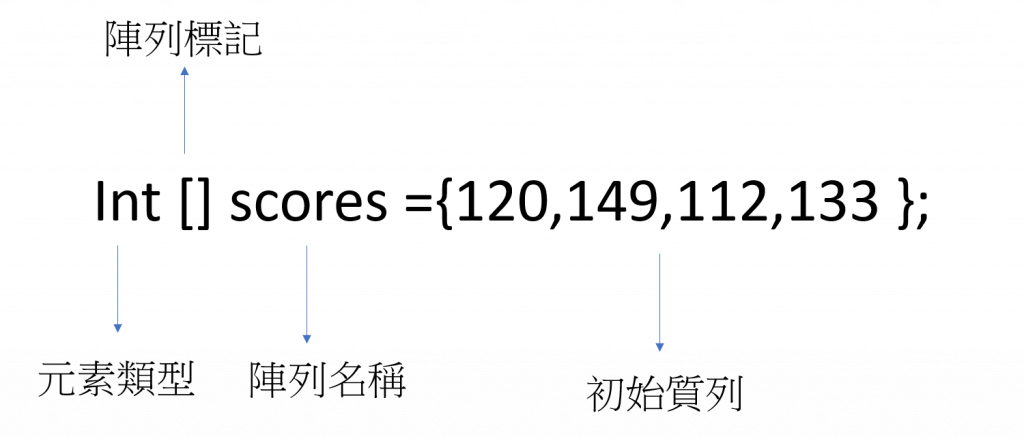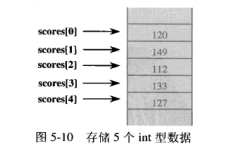🤖 當我們同在一起~陣列(Array)
成績單上有國,英,數,物理四科
分數分別 70、89、72、93
這時候我們就可以用陣列將他們綁再一起
陣列(array)
注意:C#索引是從0開始計算陣列的語法如下
整數陣列:

字串陣列:

當此句被執行時,系統就會在內存中分配一段連續的空間來儲存這四個 int 型數據
陣列元素的初始值列在大括號裡面,並且用逗號隔開

範例:我有國,英,數,物理四科,分數分別 70、89、72、93,請幫我算平均分數
using System;
using System.Collections.Generic;
using System.Linq;
using System.Text;
using System.Threading.Tasks;
namespace CsharpDemo
{
class Program
{
static void Main(string[] args)
{
//宣告整數陣列
int[] scores = { 70, 89, 72, 93 };
//計算總合
int sum = scores[0] + scores[1] + scores[2] + scores[3];
Console.WriteLine("總合 : " + sum);
//計算平均值
Console.WriteLine("平均值 : " + (sum / 4));
Console.ReadKey();
}
}
}
結果:
總合 : 324
平均值 : 81
陣列進階用法
取得陣列長度
- 使用
array.Length
- 使用
陣列非常適合搭配 for 迴圈服用
範例:將前面的範例使用 for 迴圈改寫
using System;
using System.Collections.Generic;
using System.Linq;
using System.Text;
using System.Threading.Tasks;
namespace CsharpDemo
{
class Program
{
static void Main(string[] args)
{
//宣告整數陣列
int[] scores = { 70, 89, 72, 93 };
//宣告總和
int sum = 0;
//使用for迴圈,條件為陣列的長度
for (int i = 0; i < scores.Length; i++)
{
Console.WriteLine(scores[i]);
sum += scores[i];
}
//將總和的分數除以陣列長度(總共幾門科)
float average = sum / (scores.Length);
Console.WriteLine("總分" + sum);
Console.WriteLine("平均值" + average);
Console.ReadKey();
}
}
}
結果:
70
89
72
93
總分 324
平均值 81